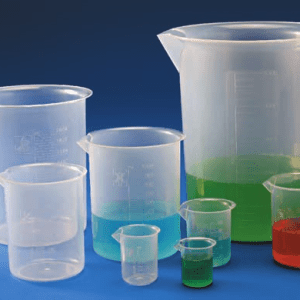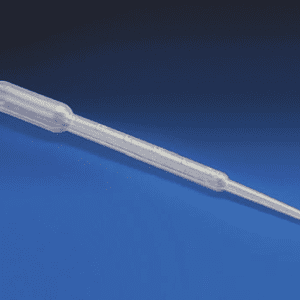Description
| Catalog No. | Capacity | Pack of |
| 12078/1 | 25 ml | 6 |
| 12078/2 | 50 ml | 6 |
| 12078/3 | 100 ml | 6 |
| 12078/4 | 250 ml | 3 |
| 12078/5 | 500 ml | 3 |
| 12078/6 | 1000 ml | 2 |
Volumetric Flask-Usage, Types & Standards
Volumetric Flask PP are wide variety of glassware used in laboratories used to measure, pour, store and hold liquids. This glassware comes in many different shapes and sizes, from thin pipettes used to deliver small amounts of liquid to beakers that hold much more liquid. One piece of laboratory glass apparatus that fits this description is known as a plastic Volumetric Flask.
The standard volumetric flask is one of the most ubiquitous laboratory instruments because it represents a major breakthrough in chemistry and physics. It has been instrumental in the development and discovery of numerous scientific investigations. As a result of its usefulness in determining the nearest exact amounts of liquid measurement, it has quickly become one of the most popular lab glass measuring instrument in laboratories.
A volumetric flask—what is it?
A type of glass container used in laboratories for volumetric measurement of liquid/ solutions. It is used in obtaining precise readings of liquid levels and mixing of liquid solutions. The most standard features are its glass construction and its unusually long and thin neck. It has an entirely level base. A gauging is a mark placed on the neck, hence the name. The liquid capacity is responsible for indicating how much liquid the volumetric flask should hold to ensure an accurate measurement. Very similar measurements can be made with much lower error rates using this method.
The pear-shaped base is where the marking for the neck begins, and it continues all the way across the slim neck. The availability of a range of volumetric indicators is thus made possible.
Need for a Volumetric Flask
A volumetric flask is an instrument for the precise measurement of liquid volumes in the laboratory. You can use them to create unique compositions by combining elements from a wide range of sources without negatively impacting the composition’s intended purpose. Don’t forget that many flasks can only be used in lab settings like those found in schools, research labs, pharma labs etc.
Making sure your measurements are accurate is the most crucial aspect of using a volumetric flask. Correctly filling the volumetric flask constitutes making up. For this purpose, a filter funnel is ideally used. The volumetric flask has a thin, long peak that makes it simpler to fill with liquid. Due to the decreased likelihood of a spill occurring, we are able to increase our precision. This will allow us to get a more precise measurement and feel more at ease throughout the whole procedure.
How to use a Volumetric Flask
- Select the appropriate flask size for the intended procedure.
- Determine and measure the amount of solid material required to make the desired solution.
- Next, transfer the substance into the flask using a funnel to ensure that none of the substance is lost during transfer.
- Rinse the sides of the funnel into the flask with your solvent (e.g., water for aqueous solutions) to remove any adhering residue.
- Then, halfway fill the flask with the solvent, cap it, and swirl to dissolve the solid material into solution.
- Once the solid material has been dissolved, fill the flask almost to the etched line with the solvent.
- Pause and allow any liquid to drain from the flask’s sides.
- Using a medicine dropper, add enough solvent to raise the base of the solution’s meniscus to the level of the etched line.
- Finally, cap, mix, and swirl your prepared solution before storing it until use.
Types of Volumetric Flasks
Depending on various factors, various volumetric flasks exist. We can classify them as follows:
1. Precision: Type A volumetric flasks are used for accurately measuring liquids and making a variety of solutions. The most cutting-edge chemistry labs will have them. Type B volumetric flasks are typical in less rigorous academic lab settings.
2. Capacity: Volumetric flasks come in various capacities, such as:
- 5 ml volumetric flask
- 10ml volumetric flask
- 20 ml volumetric flask
- 25 ml volumetric flask
- 50 ml volumetric flask
- 100 ml volumetric flask
- 150 ml volumetric flask
- 200 ml volumetric flask
- 250 ml volumetric flask
- 500 ml volumetric flask
- 1000 ml volumetric flask
- 2000 ml volumetric flask
3. Color: Colors will vary depending on the material used. Some colors are required to process light-sensitive mixtures. Remember that proper hygiene is a prerequisite for any test involving human subjects. Inadequate personal hygiene can affect the results of the measurements.
Clearly, the volumetric flask is a staple in the fields of chemistry, physics, and other disciplines that require the use of laboratory equipment. Hopefully, you were able to gain a better understanding of the volumetric flask and its primary features after reading this. The volume of flasks can classify them.
Volumetric Flask Standards
The manufacturing standards that are adhered to when manufacturing the volumetric flask. The volumetric flask is manufactured in accordance with the following three standards:
- ASTM (American Society for Testing and Materials) (American Society for Testing and Materials)
- ISO (International Organization for Standardization)
- USP (United Standard Pharmacopoeia) (United Standard Pharmacopoeia).
When it comes to equipping a laboratory, there are a lot of essential things to consider. To complete the task, you will need everything, including highly expensive specialized equipment. MEDILAB offers a cost-effective solution to some of your most important laboratory needs, such as a laboratory volumetric flask, which can assist you in cutting costs and saving money when setting up and running a laboratory.
MEDILAB is one of the most prominent manufacturers in the industry, having its own in-house Calibration laboratory. One of their primary activities is manufacturing and calibration of volumetric glassware including volumetric flasks, Burette, Pipette, Measuring Cylinders in a variety of sizes and ISO standards. ISO and DIN standards are used to make sure that MEDILAB’s volumetric glassware is made and calibrated with a high level of accuracy.
There is a wide range of capacities available for the volumetric flasks, including 2 ml, 5 ml, 10 ml, 20 ml, 25 ml, 40 ml, 50 ml, 100 ml, 150 ml, 250 ml, 500 ml, 1000 ml, 2000 ml, and 5000 ml. In pharmaceutical laboratories, large volumetric flasks are utilized for the preparation of production batches, whereas small volumetric flasks are utilized for the preparation of expensive and precious drugs.
Welcome to MEDILAB, your trusted bulk supplier of high-quality volumetric flasks. We take pride in offering a wide range of laboratory glassware to meet your needs. With our global shipping capabilities, we ensure that your orders reach you wherever you are in the world. For inquiries, bulk pricing, and more information, please contact us today and let us assist you in fulfilling your laboratory supplies. Choose MEDILAB for reliable products and exceptional service.







